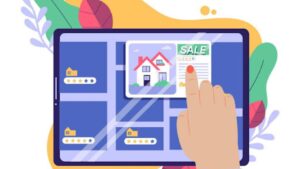If you’re in HR or managing a growing team, you’ve probably felt the strain, be it manual tasks, endless spreadsheets, or even delayed feedback cycles. It’s, therefore, no surprise that companies are turning to AI-powered HR software to scale faster, reduce burnout, and make better decisions.
What Is AI-Powered HR Software?
At its core, an AI-powered HR software combines traditional human resource management systems with machine learning, automation, and real-time data analysis.
Instead of manual workflows and limited insight, they offer real-time predictions, automated processes, and deep talent intelligence that help teams make smarter, faster decisions.
In a nutshell, systems powered by AI go beyond basic data entry and storage, which were often the hallmarks of old-school HR systems.
Benefits of Using AI in HR
The right AI-powered HR platform can bring the following benefits to your business:
Efficiency and Automation
AI handles the repetitive work: scheduling interviews, sorting resumes, sending onboarding emails. That saves hours each week and lets your HR team focus on people and not paperwork.
A Better Candidate Experience
AI can streamline job matching, send timely updates, and tailor onboarding experiences.
Smarter, Fairer Hiring
When used correctly, AI can reduce unconscious bias by anonymizing profiles and focusing on skills, not stereotypes. It also ensures consistency across hiring decisions.
Real-Time Insights
Instead of looking at last quarter’s reports, AI gives you live dashboards showing burnout risks, engagement trends, top performers, and skill gaps before they become problems.
Scalable Systems
As your team grows, AI helps you keep pace. Whether you’re adding five employees or 20, smart systems adapt quickly without overwhelming your HR team.
AI-Powered HR Software Platforms

Here are five leading AI-powered HR software you can take a look at in 2025.
TalentHR
If you’re a small to mid-sized team that wants just the right amount of automation without the bloat, TalentHR will be good for you. It’s clean, intuitive, and doesn’t drown you in features you’ll never use.
Here’s how TalentHR uses AI:
- Automates hiring tasks such as job ad creation and candidate suitability scoring.
- Offers an AI-powered HR assistant to answer questions about the software or your company’s data.
- Enables intelligent employee survey creation to gather insights, improve decision-making, and boost engagement.
TalentHR is known for its easy-to-use interface and ability to scale with growing teams. Large enterprises with complex HR needs may find its features less advanced, but its flexible, headcount-based pricing makes it especially attractive for small and mid-sized businesses seeking cost efficiency.
Leapsome
If performance reviews still feel like once-a-year box-ticking exercises, Leapsome is your fix. It uses AI to turn feedback and growth into an ongoing, personalized loop.
Here’s how AI works in this platform:
- Smart performance review cycles, nudging managers at the right time
- Goal-setting recommendations based on team history
- AI-curated learning paths tied to skills gaps
While Leapsome has its advantages, it also has some downsides. One is a steep learning curve, another being limited integration options.
That notwithstanding, Leapsome is still solid for companies serious about performance management and employee growth, especially across hybrid or remote teams.
HiBob (Bob)
HiBob is built for mid-sized teams that have outgrown spreadsheets but aren’t ready for heavy enterprise systems. It feels fresh, social, and global, and its AI features are quietly powerful.
Here’s how HiBob uses AI:
- Predictive analytics for attrition, engagement, and workforce planning
- AI-based recommendations for workflows and policy changes
- Smart alerts that flag irregularities in behavior or usage
HiBob has many enviable pros, from real-time analytics with dashboard and reporting, to an extensive integration ecosystem. However, its customer response time may leave a lot to be desired. Pricing also isn’t outright. You’ll need a sales consultation to get the details.
Rippling
If you hate juggling multiple tools for payroll, onboarding, app provisioning, and device setup, Rippling does it all, including generating a pay stub. It uses AI to:
- Flag anomalies in payroll or benefits usage
- Automate IT and HR tasks based on employee role or location
- Predict onboarding bottlenecks before they happen.
Rippling prides itself on its fast onboarding process and extensive third-party integrations. However, the lack of standard subscription plans can be off-putting.
Rippling is ideal for larger companies or hiring teams that need smarter, faster, and more inclusive recruitment pipelines.
AI in HR: Ethical and Practical Considerations
While AI brings huge benefits, it’s not without risk. Here’s what to keep in mind.
Data Privacy and Trust
Employees want to know: What data is being collected? How is it being used? Be transparent, limit tracking to what’s essential, and store data securely.
Algorithmic Bias
AI is only as fair as the data it’s trained on. If biased historical hiring patterns feed the algorithm, it’ll continue them. Always audit results and adjust as needed.
Human Oversight
AI should assist, not replace. HR decisions, especially around hiring and promotions, should always include human review. The goal is augmented intelligence, not blind automation.
Closing Thoughts
AI-powered HR software is now a competitive advantage in the workplace. Whether you’re trying to cut admin time, make smarter hiring decisions, or scale without chaos, AI-powered tools are the way forward.

But remember, not all platforms are built equally. Look for solutions that are transparent about their AI usage, scalable as your team grows, and ethical in how they handle data. Do your research and go for what best suits your budget and business processes.















